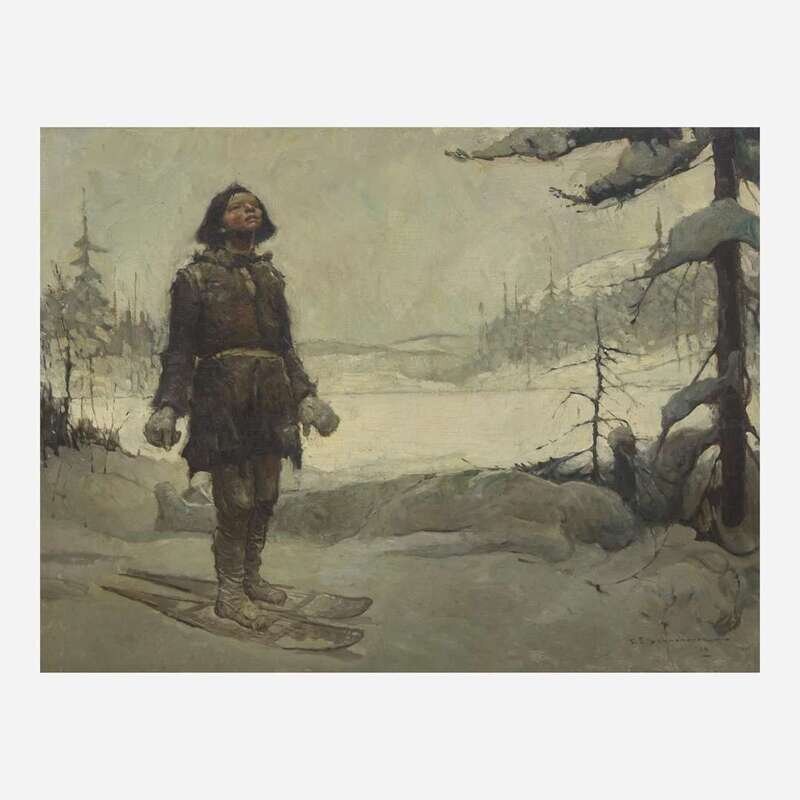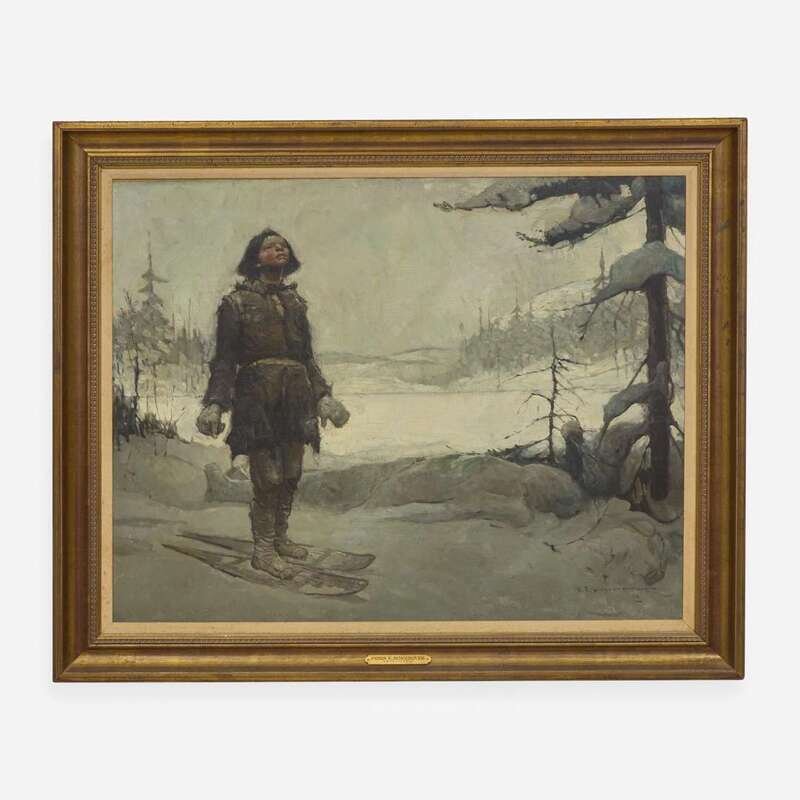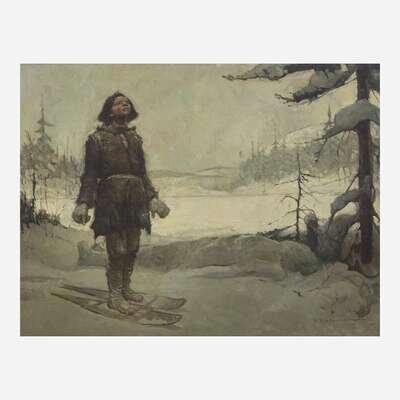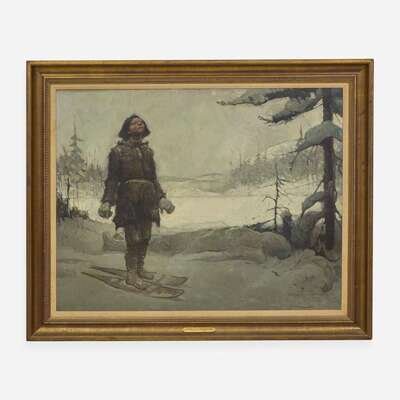Condition Report
Contact Information
Lot 51
Lot Description
Exhibited
"Frank Schoonover, 1877-1972," Society of Illustrators, New York, New York, July 11-August 11, 2001.
"Frank Schoonover: Inventing Indians," Sewell C. Biggs Museum of American Art, Dover, Delaware, July 21-October 10, 2004.
Literature
Laurie York Erskine, “The Man from the North,” in The American Boy, March 1921, p. 7 (illustrated).
Louise Schoonover Smith, LeeAnn Dean and John R. Schoonover, Frank E. Schoonover: Catalogue Raisonné, Oak Knoll Press, Newcastle, 2009, Vol. I, p. 328, no. 992 (illustrated).
Note
Schoonover’s Man from the North, one of the artist's many contributions to books and magazines during America’s “Golden Age of Illustration,” accompanied Laurie York Erskine’s short story of the same name in the March 1921 issue of American Boy. The magazine, published monthly, regaled young readers with stories of action and (oftentimes Western) adventure and was, for its time, the largest periodical for boys in circulation. Schoonover’s own feats of daring—which included excursions to Alaska and Canada, and a stint living amongst the Blackfeet Indians of the northern plains—informed his 75-year career and far-reaching body of work.
At 28 x 36 inches, Man from the North echoes the gravity of events depicted. As was often the case, the painting was published with an explanatory caption (“The Life Went Out of the Boy’s Face and He Stood as Rigid as a Totem. Kesinamis is Dead. Kesinamis, My Mother. Kesinamis, the White Otter Woman She is Dead! She Has Gone to the Spirit Place. Kesinamis, My Mother!”)—an evocative shorthand that whetted readers’ appetites and summarized key moments in the text. Schoonover’s image illustrates the story’s dramatic climax; a young boy, overcome with emotion, discovers what he erroneously believes to be the body of his deceased mother.
In a restrained palette of cream and mottled white, Schoonover masterfully recreates the tale’s arctic setting and solemn mood. The boy, modeled after the artist’s 4-year-old son, Cortlandt, stands, arms at his side, eyes turned upward. His crimson cheeks offer relief from what is largely a monochromatic composition. With purposeful daubs, Schoonover renders the region’s distinctive forests, pine boughs bending under the weight of heavy snow. The ice-covered lake and landscape beyond speak to inhospitable climes. Schoonover's illustrations–the present painting and Snowstorm at Poor Folks Haven (Lot 47) among them–not only supported a narrative, they stoked readers' imaginations and contributed to a broader culture of western adventure.
Provenance
Judy Goffman Gallery, Fort Washington, Pennsylvania.
Sotheby’s, New York, sale of June 24, 1988, lot 312.
Acquired directly from the above sale.
Somerville Manning Gallery, Wilmington, Delaware, by 1989.
The Sarah S. Harrison Collection of American Illustration, Greenville, Delaware.
By descent to Mason H. Drake.



